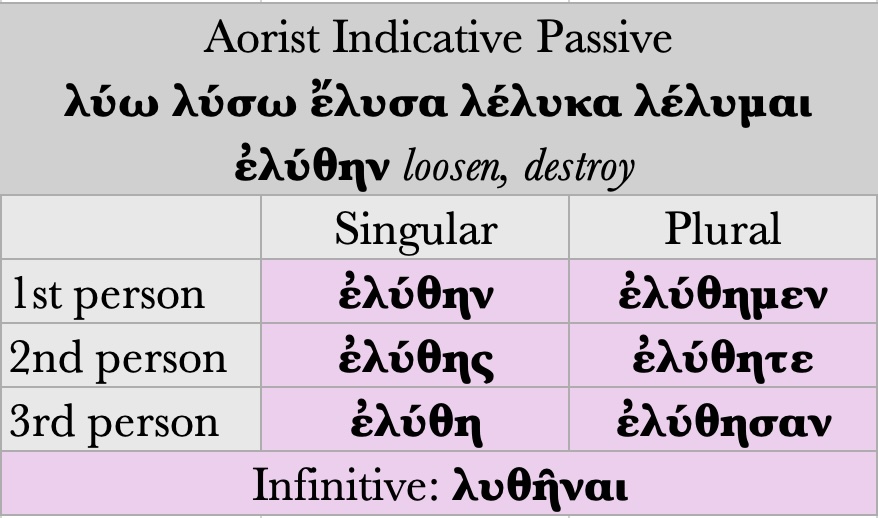29.9 As we discussed earlier, in early Greek there were no distinct PASSIVE forms in the PRESENT tense. Instead, the MIDDLE endings were used also for the PASSIVE when the need arose. The AORIST, however, is one of the few tenses for which distinct PASSIVE endings developed.
To form the aorist passive, the following formula is used:
- ἐ + verb stem + θη + athematic secondary endings
Sometimes the addition of –θη spurred changes to the verb stem (e.g., the aorist passive of ἄγω is ἤχθην). For other verbs, adding –θη created unwanted complexities in pronunciation, so only –η– was added (e.g., the aorist passive of γράφω is ἐγράφην). Since these and other such variations to the formation of the AORIST PASSIVE are possible, the AORIST PASSIVE is listed as the SIXTH PRINCIPAL PART of typical verbs. Generally speaking, however, the aorist passive is easy to recognize and parse because of its distinctive –θη marker and regular personal endings.
(cf. S 383)


